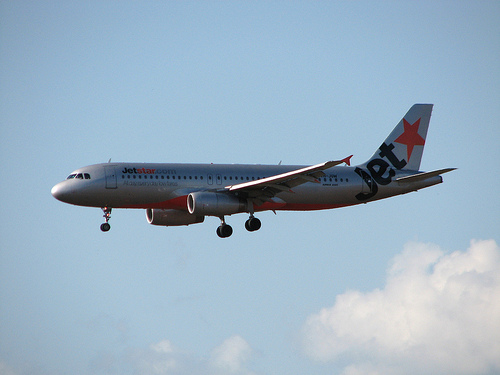Jetstar to trial SMS check-in this week

Jetstar has said it will trial an SMS mobile check-in service on its Avalon to Sydney route this week, following on from the roll-out of the Qantas SMS service last week.

(Jetstar A320 on Final Approach image
by kenhodge13, CC2.0)
The check-in technology, developed by Melbourne-based company Sissit Group, allows passengers to check-in via SMS and receive boarding pass details for their flight via email and SMS.
Jetstar spokesperson Simon Westaway told ZDNet Australia that the second trial of the system will be conducted through Melbourne's Avalon to Sydney route.
"We operate four times a day on that route and we will be trialling the technology with live customers on those particular flights."
"We just want to monitor its applicability," he said. "If it's working well, we will begin progressive roll-out on our domestic networks in Australia and New Zealand."
In September last year, Jetstar chief information officer Stephen Tame said that he expected the SMS boarding pass to be introduced in December 2009. According to Westaway, the first trial of the technology occurred just prior to Christmas last year.
The second trial follows on from the launch of similar mobile check-in services from both Virgin and Qantas in the last two weeks. In a statement provided to ZDNet Australia, Tame said that by using SMS technology, the Jetstar service differed from those launched by Qantas and Virgin in that web-enabled phones are not required to use the service.
"As a low-cost leisure airline, Jetstar must cater for 99.9 per cent of all passengers and passenger phones. The 2D mCodes proposed by Qantas, Virgin and Air New Zealand, are restricted to 3G phones and customers subscribed to a phone WAP plan."
According to Westaway, should the trial be successful, the roll-out across Australia and New Zealand is expected to be completed by the end of 2010.